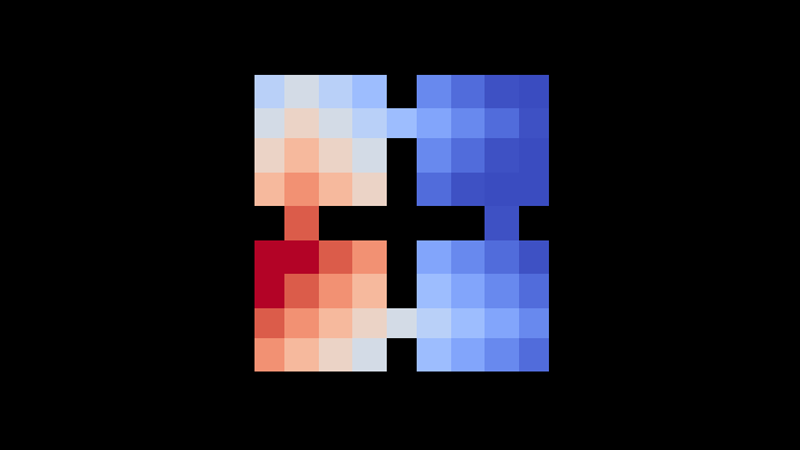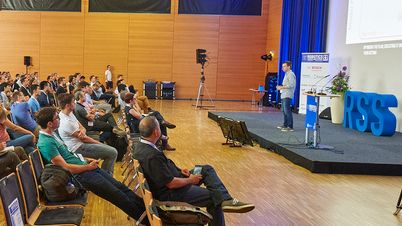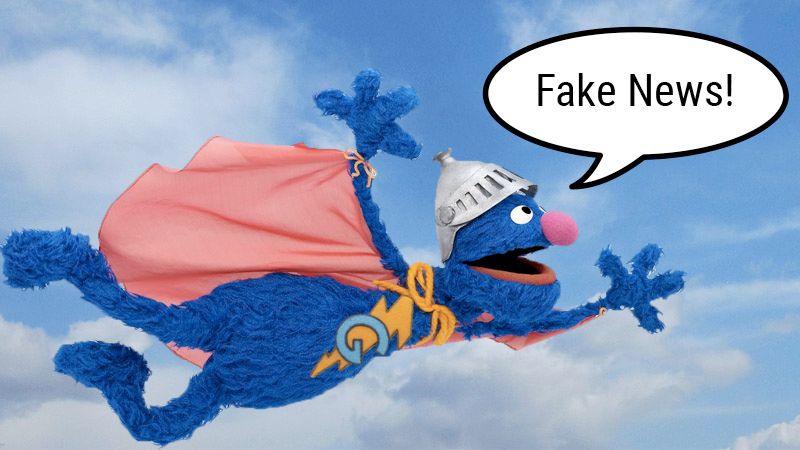This piece is the second in a two-part series, starting with Reinforcement learning’s foundational flaw.
In part 1, we have already set up our board game allegory and demonstrated that pure RL techniques are limited[1]. In this part, we will enumerate various methods of incorporating prior knowledge and instruction into deep learning, and survey some amazing recent work into doing just that to conclude it is most definitely possible.
Why have we not moved beyond pure RL?
You might be thinking something like this:
We cannot just move beyond pure RL to emulate human learning — pure RL is rigorously formulated, and our algorithms for training AI agents are proven based on that formulation. Though it might be nice to have a formulation that aligns more closely with how people learn instead of learning-from-scratch, we just don't have one.
It’s true that algorithms that incorporate prior knowledge or instructions are by definition more complex than the pure RL ones that have been rigorously formulated over decades. But that last bit is not true --- we do in fact have a formulation for learning-not-from-scratch which aligns more closely with how people learn.
Let’s start by more explicitly describing how human learning is different from pure RL. When starting to learn a new skill, we basically do one of two things: guess at what the instructions might be (recall our prior experience with board games), or read some instructions (check the board game's rules). We generally know the goal and broad approach for a particular skill from the get-go, and we never reverse-engineer these things from a low-level reward signal.

Leveraging prior experience and instruction
The ideas of leveraging prior experience and getting instructions have very direct analogues in AI research:
- Meta-learning tackles the problem of learning how to learn: making RL agents pick up new skills faster having already learned similar skills. And learning how to learn, as we'll see, is just what we need to move beyond pure RL and leverage prior experience.

- Transfer learning, roughly speaking, corresponds to 'transferring' skills attained in one problem to another potentially different problem. Here’s Demis Hassabis, CEO of DeepMind, talking about the importance of transfer learning:
"I think transfer learning is the key to general intelligence. And I think the key to doing transfer learning will be the acquisition of conceptual knowledge that is abstracted away from perceptual details of where you learned it from." - Demis Hassabis @demishassabis pic.twitter.com/oDQjvx4TLa
— Lex Fridman (@lexfridman) March 17, 2018
And I think that [Transfer Learning] is the key to actually general intelligence, and that's the thing we as humans do amazingly well. For example, I played so many board games now, if someone were to teach me a new board game I would not be coming to that fresh anymore, straight away I could apply all these different heuristics that I learned from all these other games to this new one even if I've never seen this one before, and currently machines cannot do that... so I think that's actually one of the big challenges to be tackled towards general AI.
-
Zero-shot learning is similar. It also aims to learn new skills fast, but takes it further by not leveraging any attempts at the new skill; the learning agent just receives 'instructions' for the new task, and is supposed to be able to perform well without any experience of the new task.
-
One-shot and few-shot learning are also active areas of research. These fields differ from zero-shot learning in that they use demonstrations of the skill to be learned, or just a few iterations of experience, rather than indirect 'instructions' that do not involve the skill actually being executed.
-
Life Long Learning and Self Supervised Learning are yet more examples of learning, in roughly defined as long-term continuous learning without human guidance.

These are all methodologies that go beyond learning from scratch. In particular, meta-learning and zero-shot learning capture different elements of how a human would actually approach that new board game situation. A meta-learning agent would leverage experience with prior board games to learn faster, though it would not ask for the rules of the game. On the other hand, a zero-shot learning agent would ask for the instructions, but then not try to do any learning to get better beyond its initial guess of how to play the game well. One- and few-shot learning incorporate parts of both, but are limited by only getting demonstrations of how the skill can be done — that is, the agent would observe others playing the board game, but not request explanations or the rules of the game.

The broad notions of meta-learning and zero/few-shot learning are what 'make sense' in the context of the board game allegory. Better yet, hybrids of zero/few-shot and meta learning come close to representing what people actually do. They use prior experience, instructions, and trial runs to form an initial hypothesis of how the skill should be done. Then, they actually try doing the skill themselves and rely on the reward signal to test and fine-tune their ability to do the task beyond this initial hypothesis.
It is therefore surprising that 'pure RL' approaches are still so predominant and research on meta-learning and zero-shot learning is less championed. Part of the reason for this could be that the basic formulation of RL has not been questioned more, and that the notions of meta-learning and zero-shot learning have not been popularly encoded into its basic equations. Among research that has suggested alternative formulations of RL, perhaps the most relevant piece is DeepMind's 2015 “Universal Value Function Approximators”, which generalized the idea of 'General value functions' introduced by Richard Sutton (by far the most influential researcher in RL) and collaborators in 2011. DeepMind's abstract summarizes the idea well:
"Value functions are a core component of [RL] systems. The main idea is
to to construct a single function approximator V(s; θ) that estimates the long-term reward from any state s, using parameters θ. In this paper we introduce universal value function approximators (UVFAs) V(s, g; θ) that generalise not just over states s but also over goals g."

Here is a rigorous, mathematical formulation of RL that treats goals (the high-level objective of the skill to be learned, which should yield good rewards) as a fundamental and necessary input rather than something to be discovered from just the reward signal. The agent is told what it's supposed to do, just as is done in zero-shot learning and actual human learning.
It has been 3 years since this was published, and how many papers have cited it since? 72. A tiny fraction of all papers published in RL; for context, DeepMind's "Human-level control through deep RL" was also published in 2015 and as of now has 2906 citations, and their 2016 "Mastering the game of Go with deep neural networks and tree search" has 2882 citations according to Google Scholar.
So, work is definitely being done towards this notion of incorporating meta-learning/zero-shot learning with RL. But as shown by these citation counts, this research direction is still relatively obscure. Here is the key question: why is RL that incorporates meta-learning and/or zero-shot learning, asformalized by DeepMind's work, not the default?
To some extent the answer is obvious: it's hard. AI research tends to tackle isolated, well-defined problems in order to make progress on them, and there is less work on learning that strays from pure RL and learning from scratch precisely because it is harder to define. But, this answer is not satisfactory: deep learning has enabled researchers to create hybrid approaches, such as models that contain both Natural Language Processing and Computer Vision or for that matter the original AlphaGo's approach of combining both classic techniques and Deep-Learning for playing Go extremely well. In fact, DeepMind's own recent position paper "Relational inductive biases, deep learning, and graph networks" stated this point well:
"We suggest that a key path forward for modern AI is to commit to combinatorial generalization as a top priority, and we advocate for integrative approaches to realize this goal. Just as biology does not choose between nature versus nurture—it uses nature and nurture jointly, to build wholes which are greater than the sums of their parts—we, too, reject the notion that structure and flexibility are somehow at odds or incompatible, and embrace both with the aim of reaping their complementary strengths. In the spirit of numerous recent examples of principled hybrids of structure-based methods and deep learning (e.g., Reed and De Freitas, 2016; Garnelo et al., 2016; Ritchie et al., 2016; Wu et al., 2017; Denil et al., 2017; Hudson and Manning, 2018), we see great promise in synthesizing new techniques by drawing on the full AI toolkit and marrying the best approaches from today with those which were essential during times when data and computation were at a premium."
Recent work on meta-learning / zero-shot learning
We now state our conclusion:
Motivated by the board game allegory, we should reconsider the basic formulation of RL along the lines of DeepMind’s Universal Value Function idea, or at least double down on the already ongoing research that is implicitly doing just that through meta-learning, zero-shot learning, and more.
Much, if not most, of modern RL research still builds on pure RL approaches that leverage only the reward signal and possibly a model. Not only that, but the majority of attention is still given to such work, with the previously discussed AlphaGo Zero receiving more attention and praise than most recent AI work. The paper in which it was introduced "Mastering the game of Go without human knowledge", was published just last year and already has 406 citations; DeepMind's Universal Value Function paper has been published for thrice longer and has about a third of the citations with just 72. Other notable papers that combine meta-learning and reinforcement learning stand at similar numbers: "Learning to reinforcement learn" has 58 citations and "RL2: Fast Reinforcement Learning via Slow Reinforcement Learning" has 52. But among those citations is some very exciting work:



Now that's exciting! And, all these goal-specification/hybrid meta/zero/one shot approaches are arguably just the most obvious of directions to pursue for more human-inspired AI methods. Possibly even more exciting is the recent swell of work exploring intrinsic motivation and curiosity-driven exploration for learning (often motivated, curiously, by the way human babies learn):




And we can even go beyond taking inspiration from human learning: we can directly study it. In fact, both older and cutting edge neuroscience research directly suggest human and animal learning can be modeled as reinforcement learning mixed with meta-learning:
The results of that last paper, “Prefrontal cortex as a meta-reinforcement learning system”, are particularly intriguing for our conclusion. Basically, one can even argue that human intelligence is powered at its very core by a combination of reinforcement learning and meta learning - meta-reinforcement learning. If that is the case, should we not do the same for AI?
Conclusion
The classic formulation of RL has a fundamental flaw that may limit it from solving any truly complex problems: its implied assumptions of starting from scratch and its heavy dependence on a low-level reward signal or provided environment model. As shown by the many papers cited here, going beyond starting from scratch does not necessitate hand-coded heuristics or rigid rules. Meta-RL methods empower AI agents to learn better through high-level instructions, accumulated experience, examples of what it should learn to do, learning a model of the world, intrinsic motivation, and more.
Let's end on an optimistic note: the time is ripe for the AI community to embrace work such as the above, and move beyond pure RL with more human-inspired learning approaches. Based on the board-game allegory alone, it seems reasonable to claim that AI techniques must move towards this and away from pure RL in the long term. Work on pure RL should not immediately stop, but it should be seen as useful insofar as it is complementary to non-pure RL methods and as long as we remain cognizant of its inherent limitations. If nothing else, methods based on meta-learning, zero/few-shot learning, transfer learning, and hybrids of all of these should become the default rather than the exception. And as a researcher about to embark on my PhD, I for one am willing to bet my most precious resource — my time — on it.

Andrey Kurenkov is a graduate student affiliated with the Stanford Vision Lab, and lead editor of Skynet Today. These opinions are solely his.
Citation
For attribution in academic contexts or books, please cite this work as
Andrey Kurenkov, "How to fix reinforcement learning", The Gradient, 2018.
BibTeX citation:
@article{kurenkov2018reinforcementfix,
author = {Kurenkov, Andrey}
title = {How to fix reinforcement learning},
journal = {The Gradient},
year = {2018},
howpublished = {\url{https://thegradient.pub/how-to-fix-rl/ } },
}
If you enjoyed this piece and want to hear more, subscribe to the Gradient and follow us on Twitter.
A brief disclaimer: the intent of this essay is in no way to diminish any of the research discussed or to claim AI researchers focusing on RL are getting it all wrong. Rather, the intent is to try and scrutinize how we think about certain problems in AI from a point of first principles and naïveté so as to ponder whether we could change our perspective on them. I am also far from the first to think along these lines, and my aim is mostly to put into words a general feeling of excitement about ideas such as meta-learning expressed by many in the AI community. ↩︎
"Dealing with sparse rewards is one of the biggest challenges in Reinforcement Learning (RL). We present a novel technique called Hindsight Experience Replay which allows sample-efficient learning from rewards which are sparse and binary and therefore avoid the need for complicated reward engineering. ↩︎
"As a step towards developing zero-shot task generalization capabilities in RL, we introduce a new RL problem where the agent should learn to execute sequences of instructions after learning useful skills that solve subtasks. “ ↩︎
"We consider the task of spatial reasoning in a simulated environment, where an agent can act and receive rewards. The proposed model learns a representation of the world steered by instruction text." ↩︎
"In this paper, we explore the utilization of natural language to drive transfer for reinforcement learning (RL). Despite the wide-spread application of deep RL techniques, learning generalized policy representations that work across domains remains a challenging problem. We demonstrate that textual descriptions of environments provide a compact intermediate channel to facilitate effective policy transfer. " ↩︎
"In reinforcement learning, we often define goals by specifying rewards within desirable states. One problem with this approach is that we typically need to redefine the rewards each time the goal changes, which often requires some understanding of the solution in the agents environment. When humans are learning to complete tasks, we regularly utilize alternative sources that guide our understanding of the problem. Such task representations allow one to specify goals on their own terms, thus providing specifications that can be appropriately interpreted across various environments. This motivates our own work, in which we represent goals in environments that are different from the agents." ↩︎
"Two of the core challenges in Reinforcement Learning are the correct assignment of credits over long periods of time and dealing with sparse rewards. In this thesis we propose a framework based on the notions of goals to tackle these problems." ↩︎
"We present a method for using previously-trained 'teacher' agents to kickstart the training of a new 'student' agent. To this end, we leverage ideas from policy distillation and population based training." ↩︎
"One of our approximations results in using surprisal as intrinsic motivation, while the other gives the k-step learning progress. We show that our incentives enable agents to succeed in a wide range of environments with high-dimensional state spaces and very sparse rewards, including continuous control tasks and games in the Atari RAM domain,outperforming several other heuristic exploration techniques." ↩︎
"Exploration is a fundamental challenge in reinforcement learning (RL). Many of the current exploration methods for deep RL use task-agnostic objectives, such as information gain or bonuses based on state visitation. However, many practical applications of RL involve learning more than a single task, and prior tasks can be used to inform how exploration should be performed in new tasks. In this work, we explore how prior tasks can inform an agent about how to explore effectively in new situations." ↩︎
"Reinforcement learning provides a powerful and general framework for decision making and control, but its application in practice is often hindered by the need for extensive feature and reward engineering. Deep reinforcement learning methods can remove the need for explicit engineering of policy or value features, but still require a manually specified reward function. Inverse reinforcement learning holds the promise of automatic reward acquisition, but has proven exceptionally difficult to apply to large, high-dimensional problems with unknown dynamics. In this work, we propose AIRL, a practical and scalable inverse reinforcement learning algorithm based on an adversarial reward learning formulation." ↩︎
“In many real-world scenarios, rewards extrinsic to the agent are extremely sparse, or absent altogether. In such cases, curiosity can serve as an intrinsic reward signal to enable the agent to explore its environment and learn skills that might be useful later in its life. We formulate curiosity as the error in an agent's ability to predict the consequence of its own actions in a visual feature “world-model” network that learns to predict the dynamic consequences of the agent’space learned by a self-supervised inverse dynamics model. " ↩︎
"We propose Scheduled Auxiliary Control (SAC-X), a new learning paradigm in the context of RL. SAC-X enables learning of complex behaviors - from scratch - in the presence of multiple sparse reward signals. To this end, the agent is equipped with a set of general auxiliary tasks, that it attempts to learn simultaneously via off-policy RL. The key idea behind our method is that active (learned) scheduling and execution of auxiliary policies allows the agent to efficiently explore its environment - enabling it to excel at sparse reward RL." ↩︎
"Infants are experts at playing, with an amazing ability to generate novel structured behaviors in unstructured environments that lack clear extrinsic reward signals. We seek to mathematically formalize these abilities using a neural network that implements curiosity-driven intrinsic motivation. Using a simple but ecologically naturalistic simulated environment in which an agent can move and interact with objects it sees, we propose a "world-model" network that learns to predict the dynamic consequences of the agent's actions. Simultaneously, we train a separate explicit "self-model" that allows the agent to track the error map of its own world-model, and then uses the self-model to adversarially challenge the developing world-model. We demonstrate that this policy causes the agent to explore novel and informative interactions with its environment, leading to the generation of a spectrum of complex behaviors, including ego-motion prediction, object attention, and object gathering." ↩︎
"Animals execute goal-directed behaviours despite the limited range and scope of their sensors. To cope, they explore environments and store memories maintaining estimates of important information that is not presently available. Recently, progress has been made with artificial intelligence (AI) agents that learn to perform tasks from sensory input, even at a human level, by merging reinforcement learning (RL) algorithms with deep neural networks, and the excitement surrounding these results has led to the pursuit of related ideas as explanations of non-human animal learning. However, we demonstrate that contemporary RL algorithms struggle to solve simple tasks when enough information is concealed from the sensors of the agent, a property called "partial observability". An obvious requirement for handling partially observed tasks is access to extensive memory, but we show memory is not enough; it is critical that the right information be stored in the right format. We develop a model, the Memory, RL, and Inference Network (MERLIN), in which memory formation is guided by a process of predictive modeling." ↩︎
"We explore building generative neural network models of popular reinforcement learning environments. Our world model can be trained quickly in an unsupervised manner to learn a compressed spatial and temporal representation of the environment. By using features extracted from the world model as inputs to an agent, we can train a very compact and simple policy that can solve the required task. We can even train our agent entirely inside of its own hallucinated dream generated by its world model, and transfer this policy back into the actual environment. " ↩︎
"Meta-parameters in reinforcement learning should be tuned to the environmental dynamics and the animal performance. Here, we propose a biologically plausible meta-reinforcement learning algorithm for tuning these meta-parameters in a dynamic, adaptive manner. We tested our algorithm in both a simulation of a Markov decision task and in a non-linear control task. Our results show that the algorithm robustly finds appropriate meta-parameter values, and controls the meta-parameter time course, in both static and dynamic environments. We suggest that the phasic and tonic components of dopamine neuron firing can encode the signal required for meta-learning of reinforcement learning." ↩︎
"Specifically, by adjusting the connection weights within the prefrontal network, DA-based RL creates a second RL algorithm, implemented entirely in the prefrontal network’s activation dynamics. This new learning algorithm is independent of the original one, and differs in ways that are suited to the task environment. Crucially, the emergent algorithm is a full-fledged RL procedure: It copes with the exploration-exploitation tradeoff, maintains a representation of the value function, and progressively adjusts the action policy. In view of this point, and ‘meta-reinforcement learning’ recognition of some precursor research, we refer to the overall effect as meta-reinforcement learning." ↩︎





